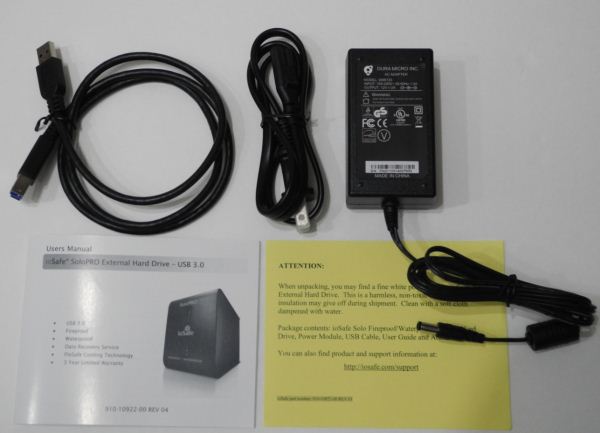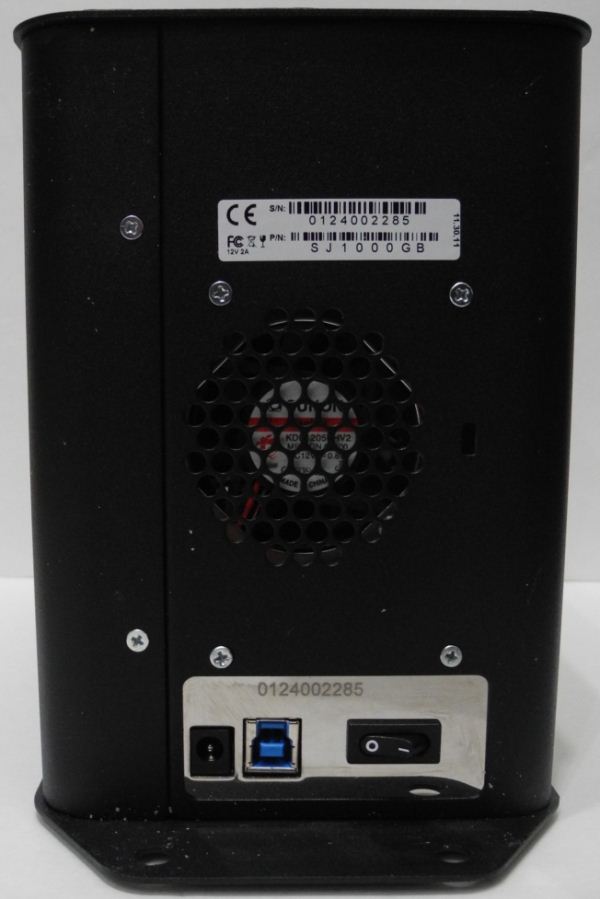ioSafe SoloPRO: Disaster Proofing Your Storage Needs
by Ganesh T S on April 9, 2012 6:00 PM EST- Posted in
- Storage
- IT Computing
- ioSafe
Consumers understand the importance of keeping their documents and other material possessions safe from unexpected disasters. Towards this, many invest in fireproof and waterproof safes. However, as the digital economy grows, many of the possessions such as documents and photo albums are in terms of bits and bytes, rather than tangible things which can be placed in safes. This brings to fore the necessity to find a disaster-proof safe place for those bits and bytes in both personal and business settings.
Storage media (hard disks, in particular) are quite sensitive to environmental conditions, and protecting them from disasters such as fires and floods is an interesting problem. ioSafe has been in the business of selling disaster proof storage solutions for the last 7 years. Their products have been well-reviewed and their CES demonstrations have always drawn a large audience. We received a ioSafe SoloPRO 1TB USB 3.0 version to take out on a test drive. The unit protects data from loss up to 1550°F for 1/2 hour as per ASTM E119 and it is also waterproof upto 10 ft. for 72 hours.
Package Contents and Initial Impressions:
The ioSafe SoloPRO package was surprisingly heavy, coming in at 18 lbs. In addition to the main unit, it came with a 24 W power adapter, a USB 3.0 cable, a user manual and a note about the possibility of fireproof insulation powder being present on the external surface of the unit.
The main unit alone weighed in at a hefty 15.5 lbs. Its dimensions are 5" x 7.1" x 11". The rear side of the main unit has an explicit on-off switch, the USB 3.0 connector and the power inlet. There is also a fan in the unit for active cooling of the hard drive.
On connecting the unit to the computer, we found that the unit internally uses a Seagate Barracuda 7200 rpm 1 TB hard drive with a 32 MB buffer. The USB 3.0 port is provided by JMicron's JMS539 SuperSpeed USB to SATA II 3.0G bridge.
Those are the tangibles in the shipment. What else does one get? The SoloPRO unit comes with a Data Recovery Service (DRS) package, 1 year of which is included in the purchase price. The SoloPRO allows for this to be upgraded to either 3 or 5 years at an extra cost of $50 or $100 respectively. The warranty in the US market is for 3 years, but a 5 year upgrade to DRS automatically extends the warranty to 5 years.
The DRS provides for one instance of no-questions-asked data and hardware recovery. The user mails the affected unit back to ioSafe (shipping paid by ioSafe) and the recovered data is loaded onto another ioSafe unit. In case the data is not recoverable through ioSafe's usual procedures, the company provides upto $2500 in coverage for data recovery by a third party.
Consumers have to explicitly register online with ioSafe for DRS to be enabled on their unit. There is a lot of information (some of which is unnecessary, in our opinion) that needs to be entered while registering. Upon successful registration, one is also provided with a single user license for Genie Timeline Pro, a software to aid in backups (say, to a SoloPRO). The software costs $59.95 when bought standalone, but is complimentary with the purchase of an ioSafe SoloPRO.
The ioSafe SoloPRO 1TB version with USB 3.0 support comes with a MSRP of $349.99, a premium of more than $200 over a comparable non-disaster proof version. What is the technology that is worth this premium? Let us see in the next section.



















34 Comments
View All Comments
ant6n - Monday, April 9, 2012 - link
Most of the inventions related to cooling the drive while fire/water-proofing will be moot once SSDs get cheaper. Maybe they should focus on finding ways to redundantly store data in SSDs in a fire/water proofed way.ganeshts - Monday, April 9, 2012 - link
ioSafe has a disaster proof SSD solution also. Why do you think fire/water proofing is not necessary for SSDs?bji - Monday, April 9, 2012 - link
I think you misunderstood the comment.The comment was that COOLING THE DRIVE is not necessary for an SSD which makes it easier to develop fire/water proof solutions based on SSDs.
The comment was NOT that fire/water proofing is not necessary for SSDs.
B-Unit1701 - Tuesday, April 10, 2012 - link
I would imagine that is the basis for the internal drive plugged at the end of the article. A standard sized SSD in a 5/12" vault.PostToaster - Tuesday, April 10, 2012 - link
bji -
Mmh didn't misunderstand your comment. You mis-wrote it. You should have said "trivial" instead of "moot". They mean different things.
robb.moore - Tuesday, April 10, 2012 - link
Hi bjl-Cooling electronics is always important as HDDs, like SSDs, all generate heat. SSDs generally do generate less heat than HDDs at idle but when operating - they both use about 4-5W of energy. Even 1W in a small enough enclosure can get incredibly hot if insulated.
ioSafe technology is about how to built a heat generating computer in a perfectly insulated box. It's tricky to do both at a price point that everyone can afford. Thanks for your comments!
-Robb
Robb Moore
CEO
ioSafe
Samus - Thursday, April 12, 2012 - link
I agree. 5-watt SSD's get pretty hot, you can't just put them in an air-tight enclosure. I've read a number of stories involving OCZ's drives (among the highest wattage drives) failing in laptops, especially older Thinkpad's that were designed for 4200RPM drives.g00ey - Thursday, April 12, 2012 - link
I'm still concerned about the integrity of data storage. It is a well known fact that storage devices are prone to failure no matter how fire- and waterproof you make them. This means that some form of redundancy is required and at the moment only ZFS can deliver proper protection against data corruption.File systems such as BrtFS and HammerFS look promising but it will take years until they can deliver the same data integrity protection as ZFS currently does.
robb.moore - Thursday, April 12, 2012 - link
Agreed - redundant copies of the data is VERY important. (See 3-2-1 Backup in the comments further down.)The simple choice with ioSafe is that if you're going to buy an external hard drive anyway...would you like the RED hard drive or the FIREPROOF WATERPROOF hard drive for your data.
-Robb
Robb Moore
CEO
ioSafe
JNo - Monday, April 9, 2012 - link
Off site cloud storage (as well as onsite secondary backup system) is surely the way to go? Onsite backup can burn down too but one or more cloud systems are unlikely to go down simultaneously. Now if only it was cheap enough to back up my movie collection as well as my documents :)